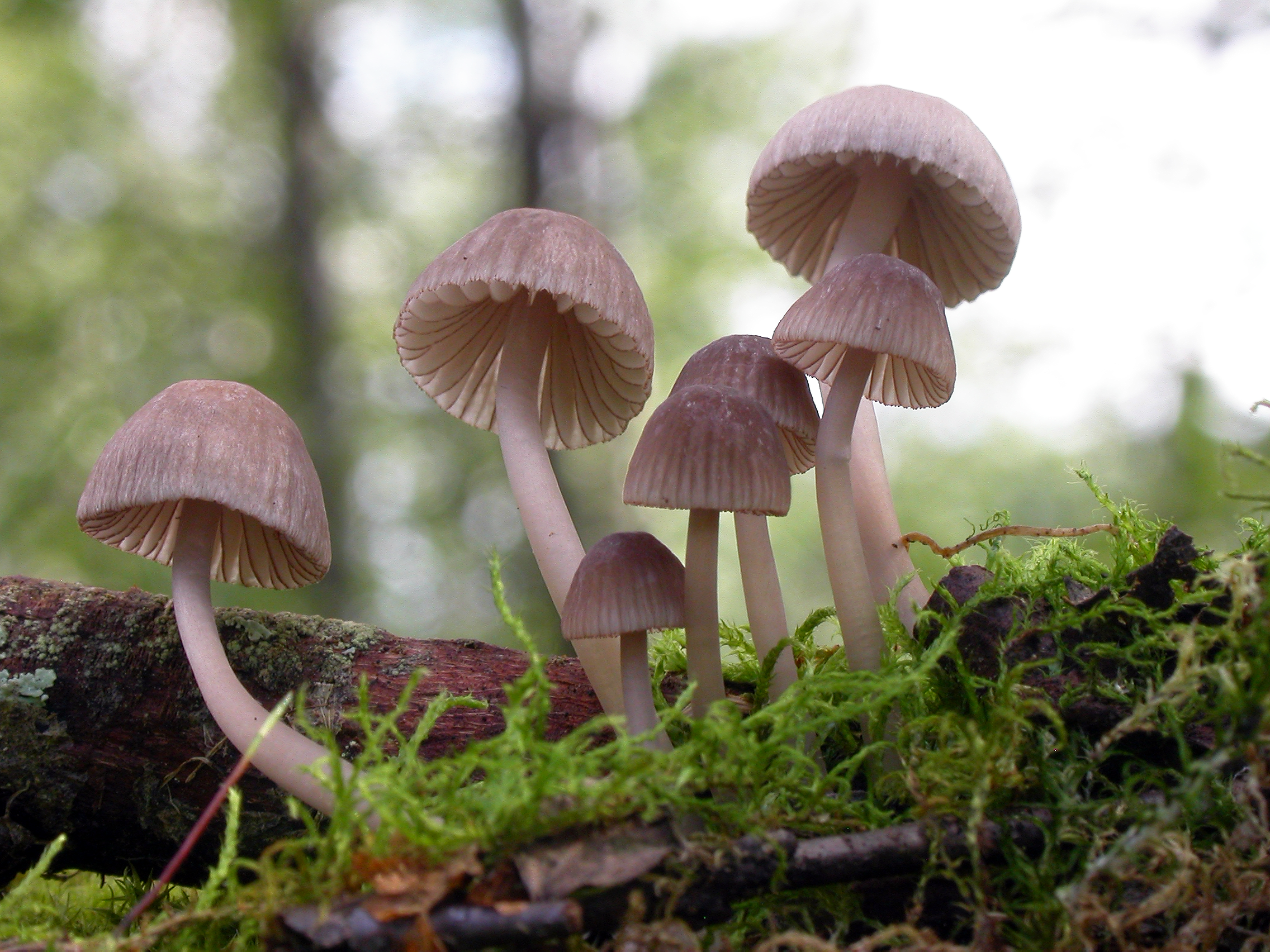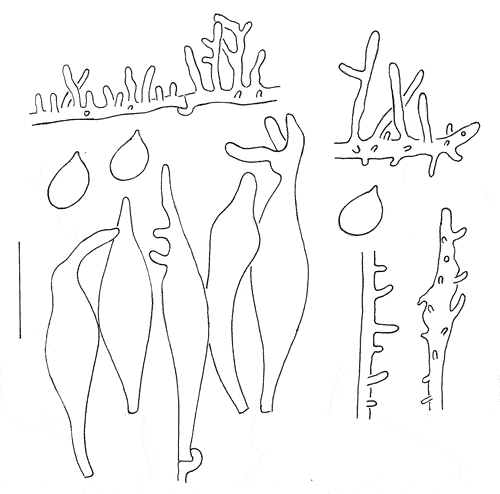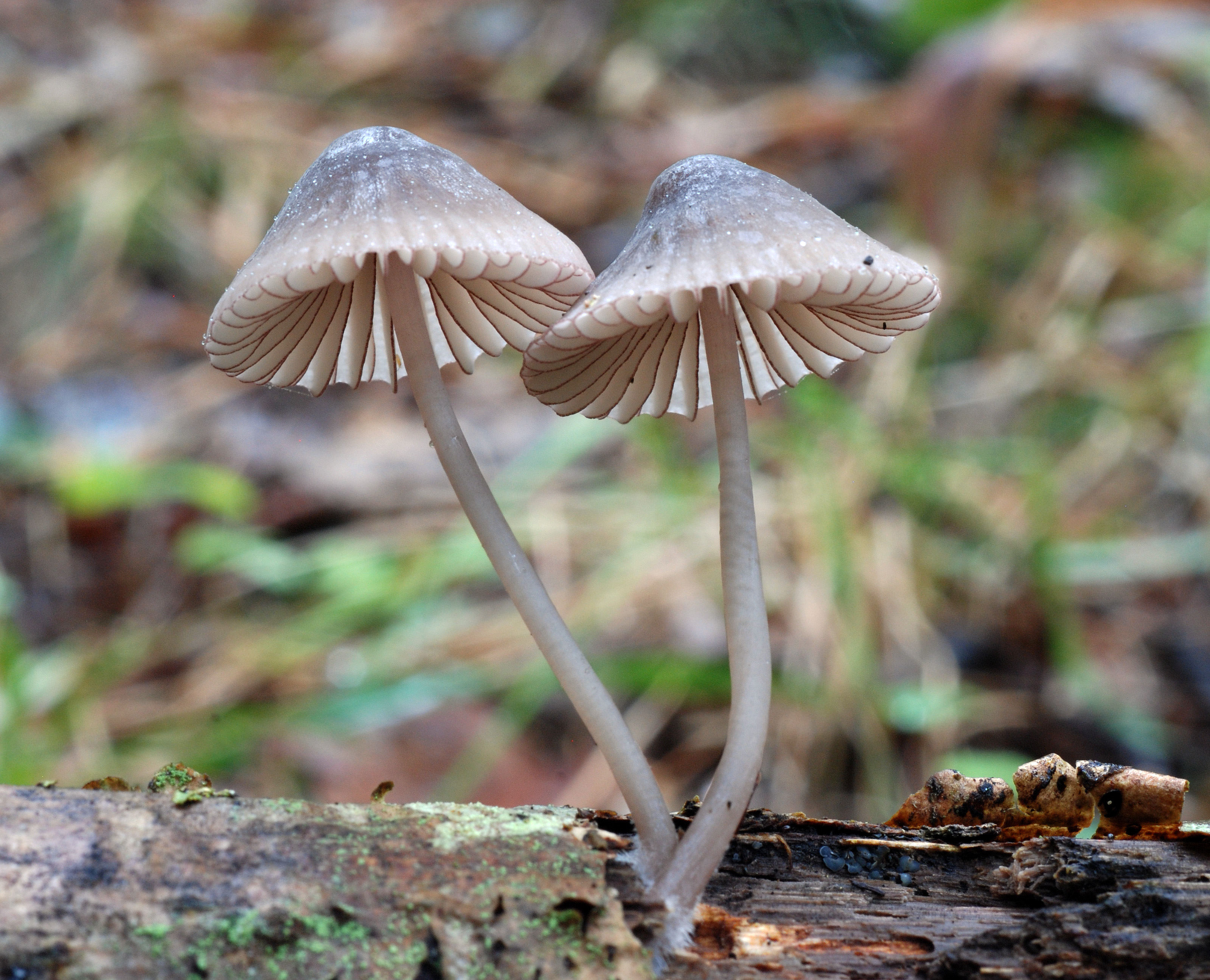Mycena rubromarginata
Mycena rubromarginata
Description
Hyphae of the pileipellis, spores, cheilocystidia, and hypha of the cortical layer of the stem with terminal cell.
Cap 10-30 mm across, conical to parabolical, flattening with age, glabrous, sulcate, translucent-striate, grey to grey-brown, pale brown to fairly dark brown, sometimes but not always with a pinkish or vinaceous tinge, darker at the centre, the margin often very pale. Gills 15 - 22 reaching the stem, ascending, adnate, becoming dorsally intervenose with age, whitish to whitish grey or grey, sometimes with a pink tinge; the edge vinaceous brown, red-brown to pale brown, in older specimens more brown, the colour more prominent near the stem. Stem 10- 60 x 1-2 mm, hollow, equal to somewhat widened below, terete, straight to curved, pruinose to finely puberulous, glabrescent for the greater part, shiny, concolorous with the cap, dark grey-brown to pale brown, often with a faint vinaceous shade, pallescent with agethe base densely covered with white fibrils. Odour indistinctive. Basidia 23-34 x 8-12 µm, clavate, 4-spored, with sterigmata up to 8 µm long. Spores 9.2-13.4 x 6.5-9.4 µm, Qav = 1.4-1.6, broadly pip-shaped to almost subglobose, amyloid. Cheilocystidia 23-70 x 6.5-17 µm, forming a sterile band, fusiform to subcylindrical or lageniform, with reddish brown contents, apically mostly narrowed into a simple or branched neck or into several necks, but sometimes clavate without a neck. Pleurocystidia absent. Lamellar trama dextrinoid. Hyphae of the pileipellis 3-7 µm wide, covered with simple to branched excrescences 2-28 x 1.5-3.5 µm, forming dense masses. Hyphae of the cortical layer of the stem 1.5-4 µm wide, smooth to sparsely covered with simple to branched, cylindrical excrescences 2-14 x 1-2.8 µm; terminal cells up to 9 µm wide, cylindrical to somewhat clavate, covered with simple to branched, cylindrical excrescences 1-20 x 1-3 µm. Clamps present in all tissues.
Ecology and distribution
On fallen branches and decaying wood of both conifers and deciduous trees. Very common on alpine Salix shrubs. Summer to autumn. Widely distributed and common in Norway.


